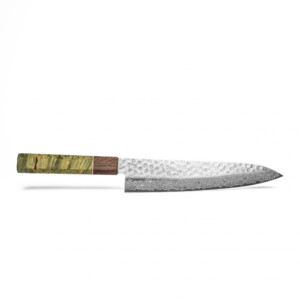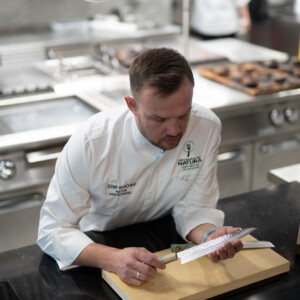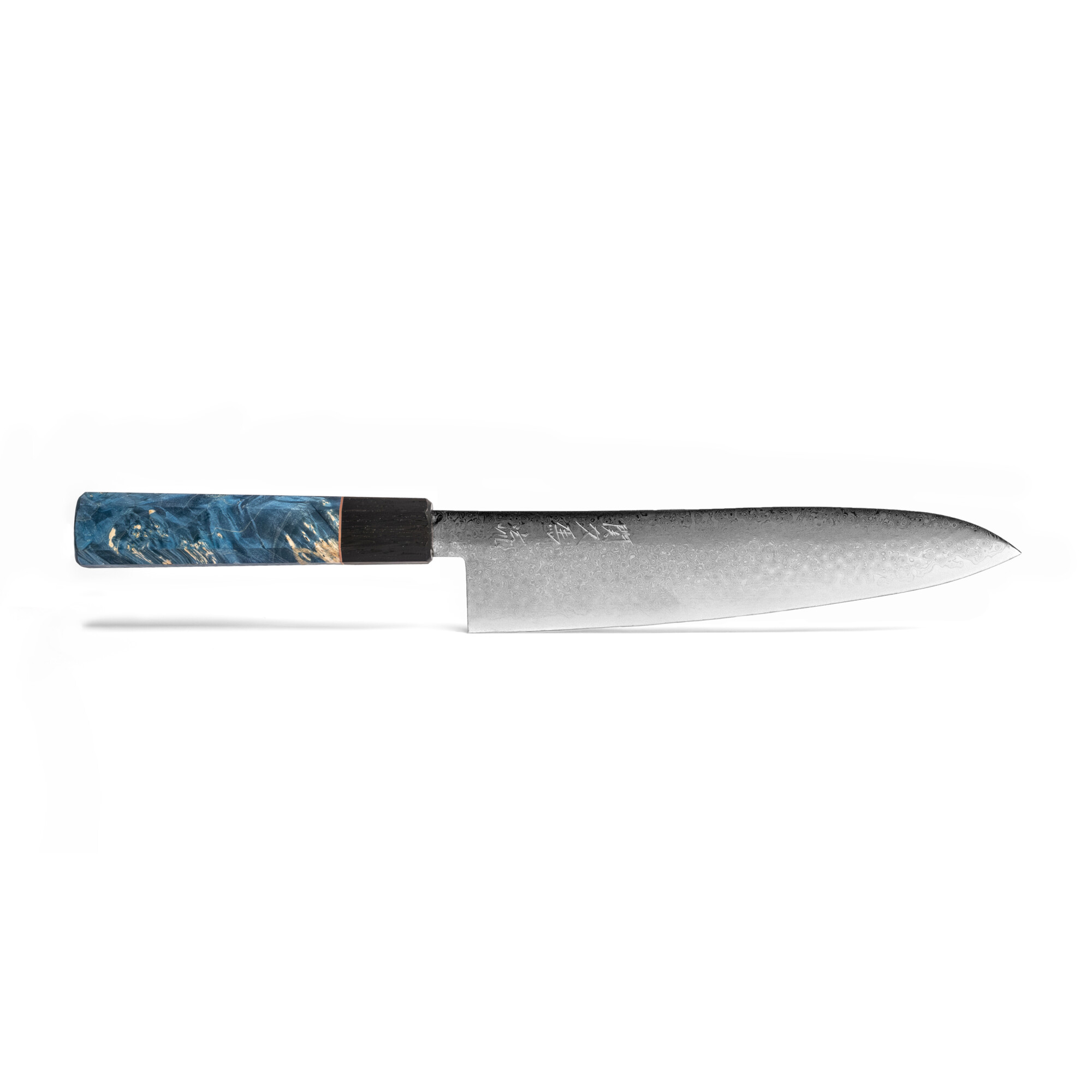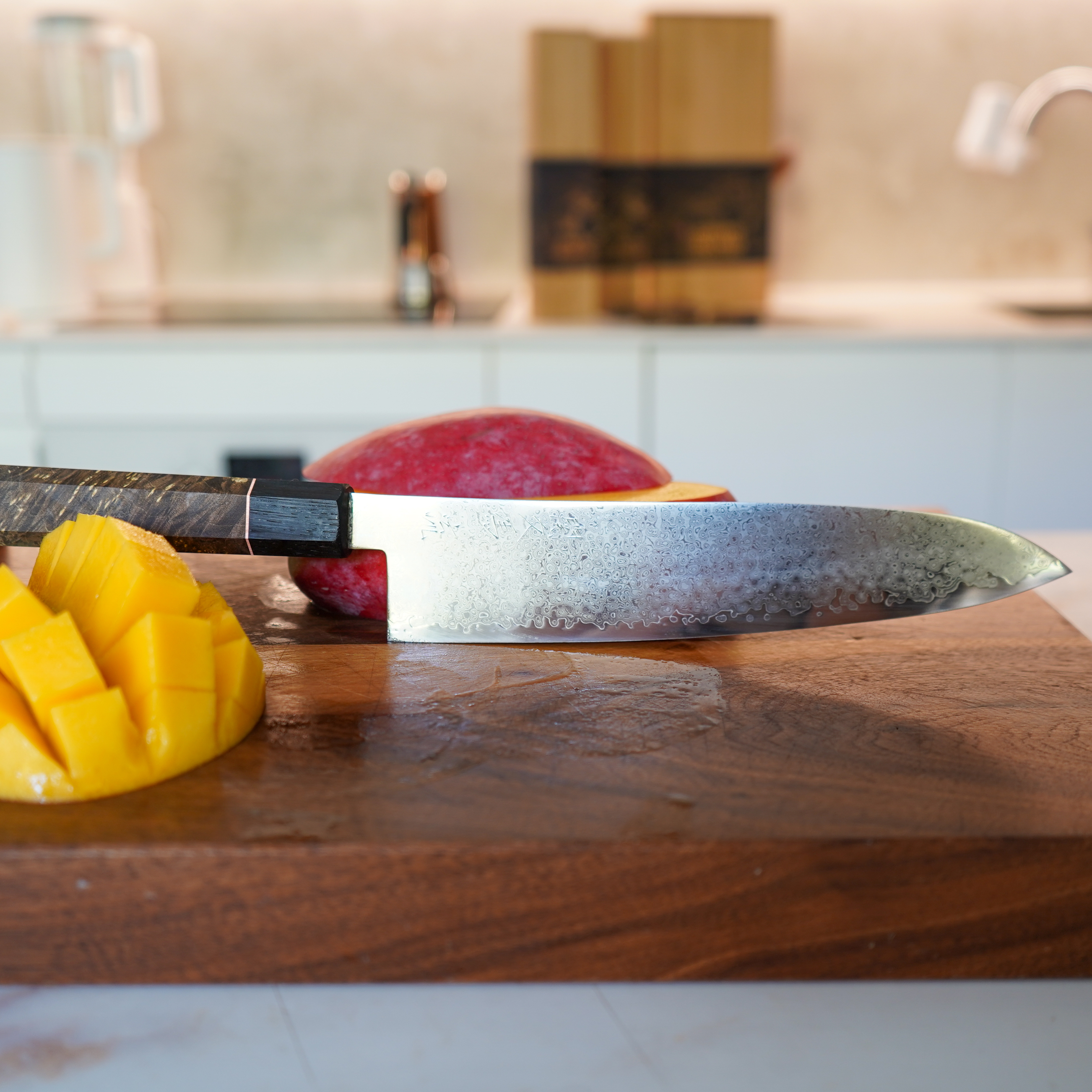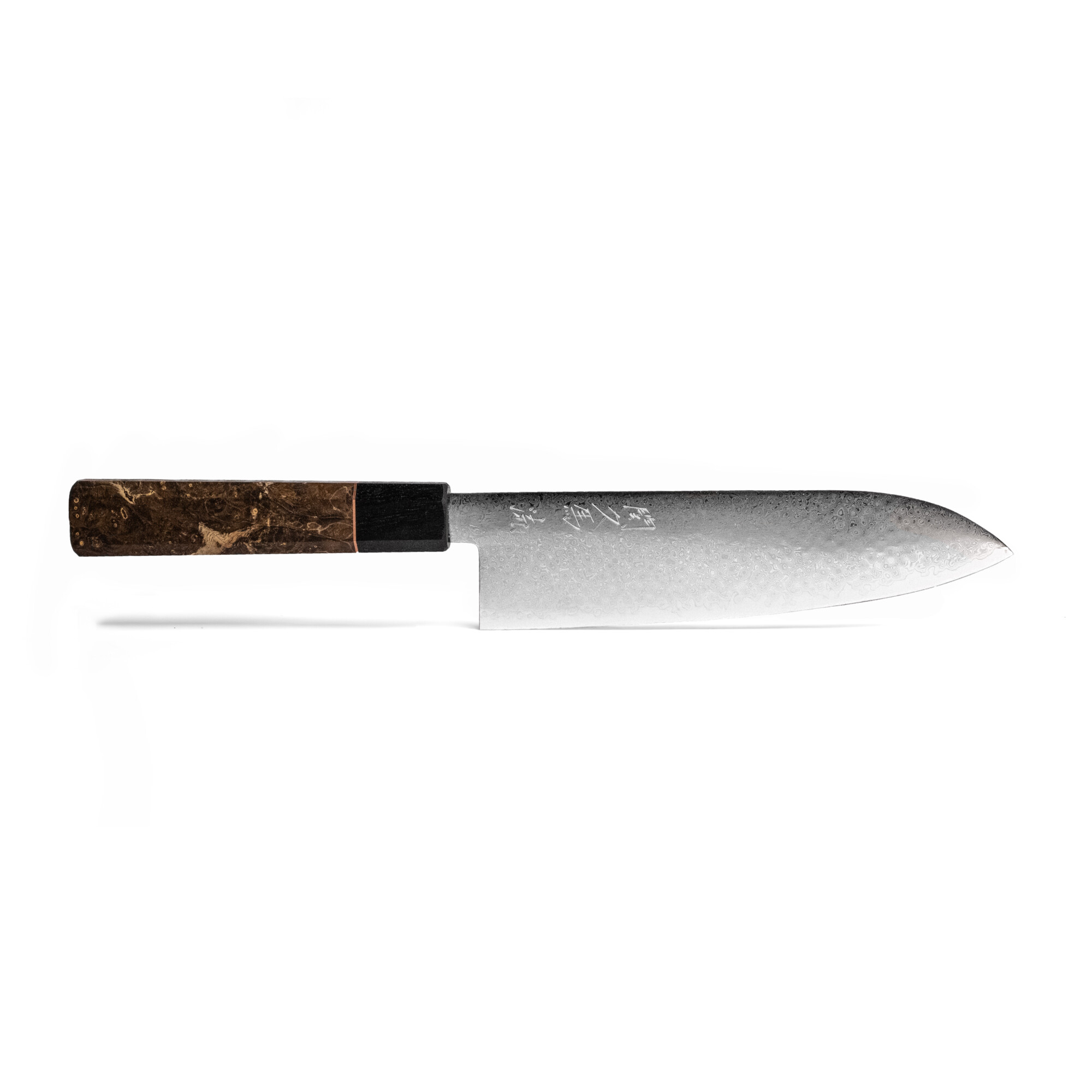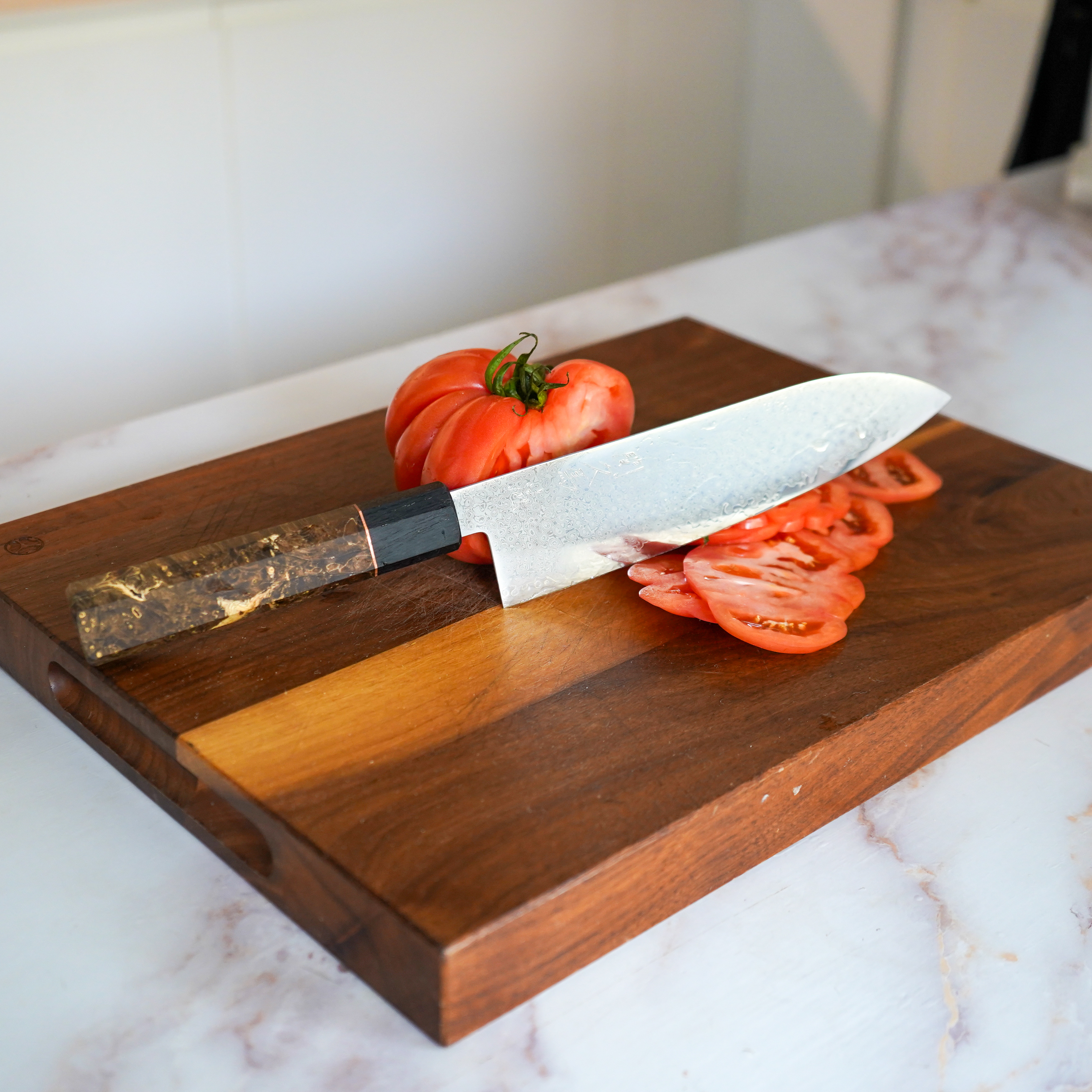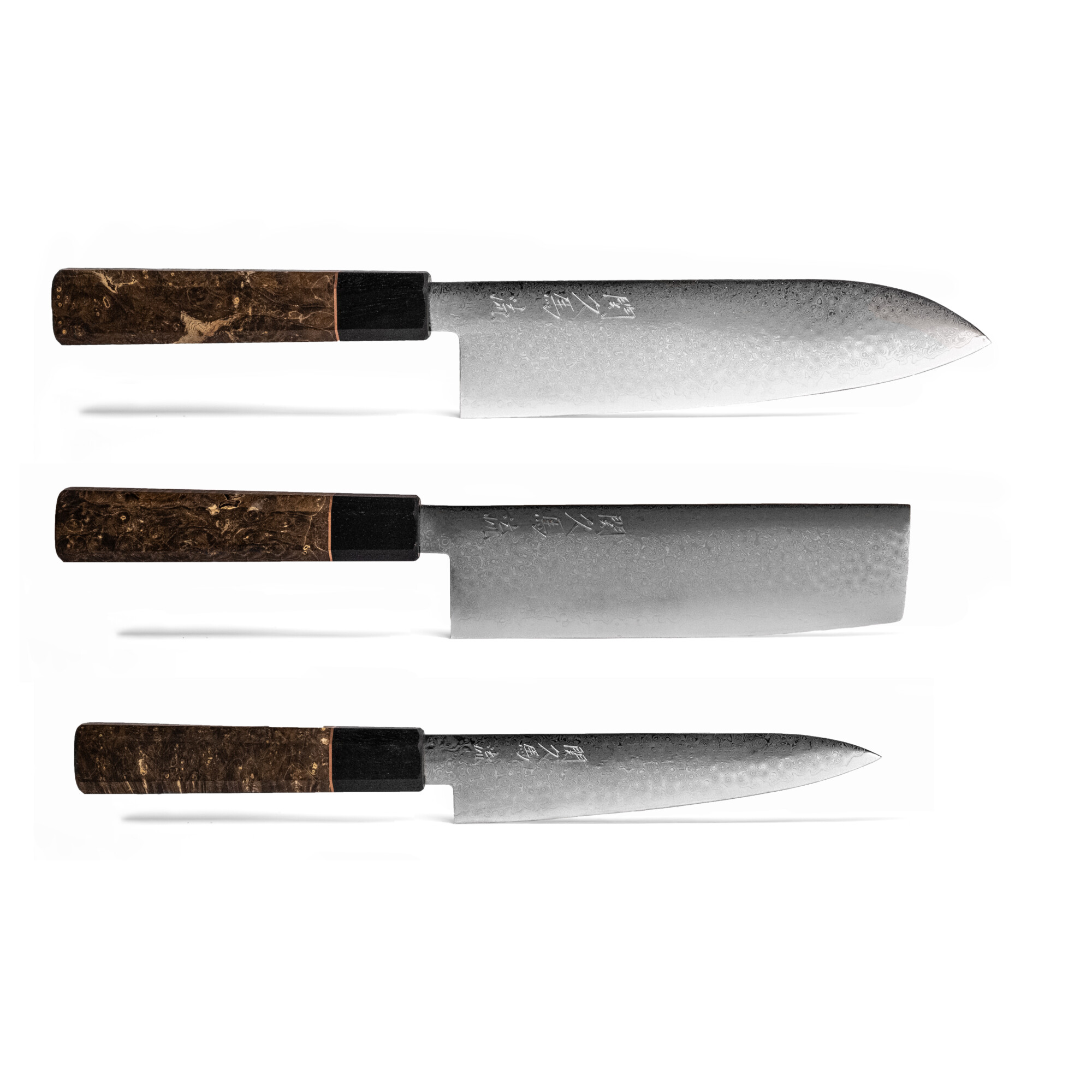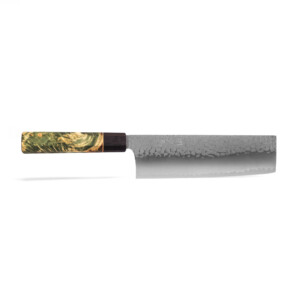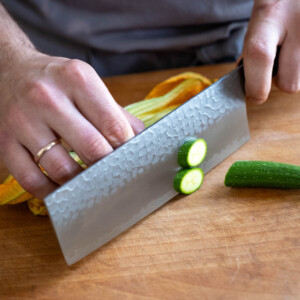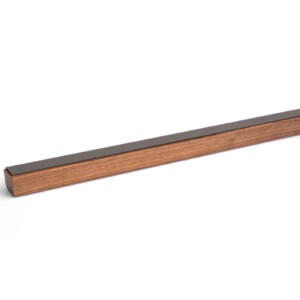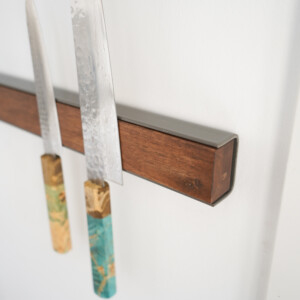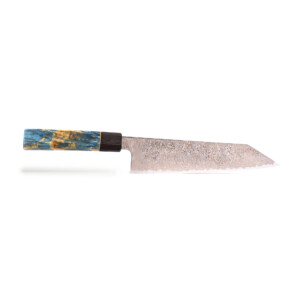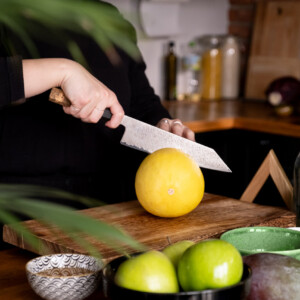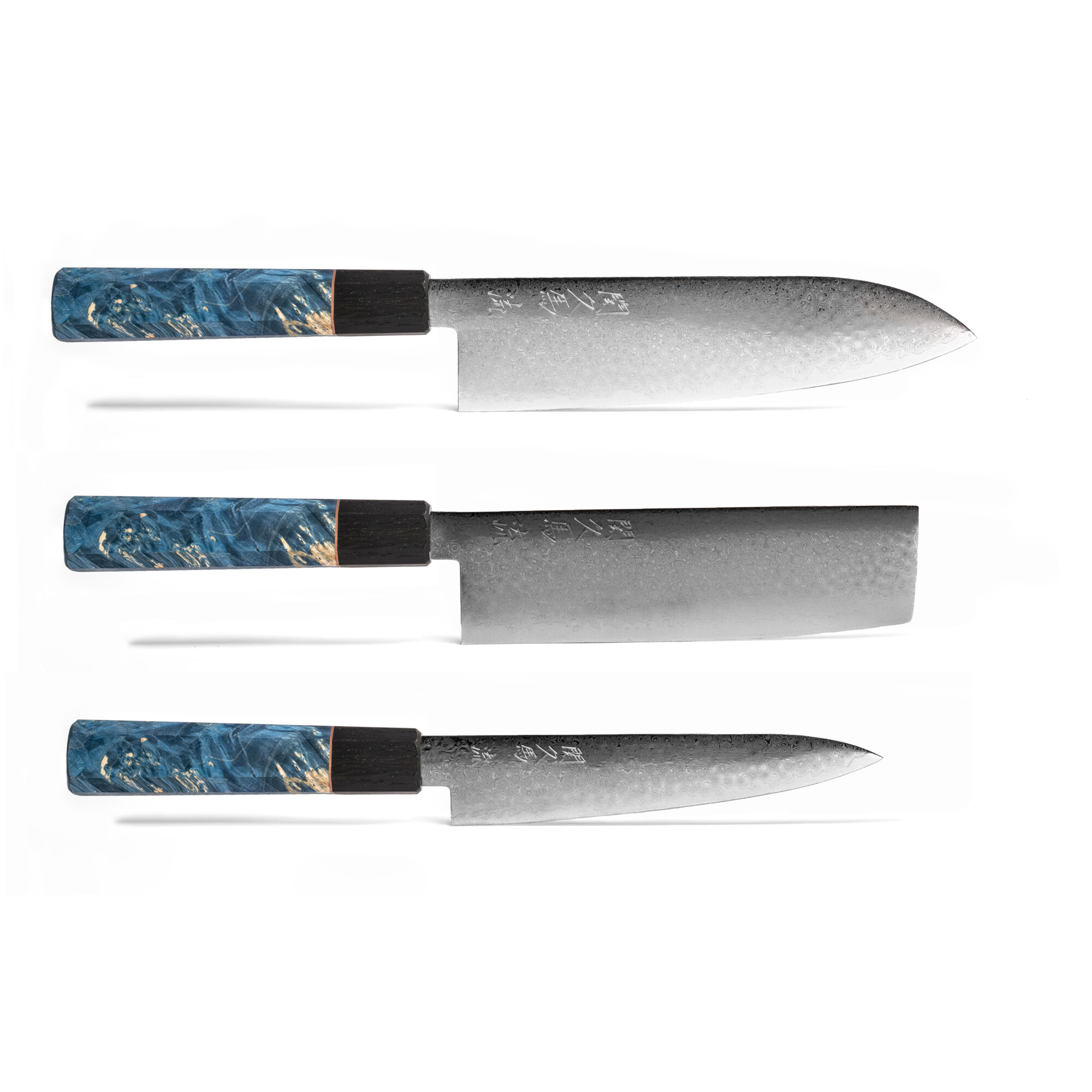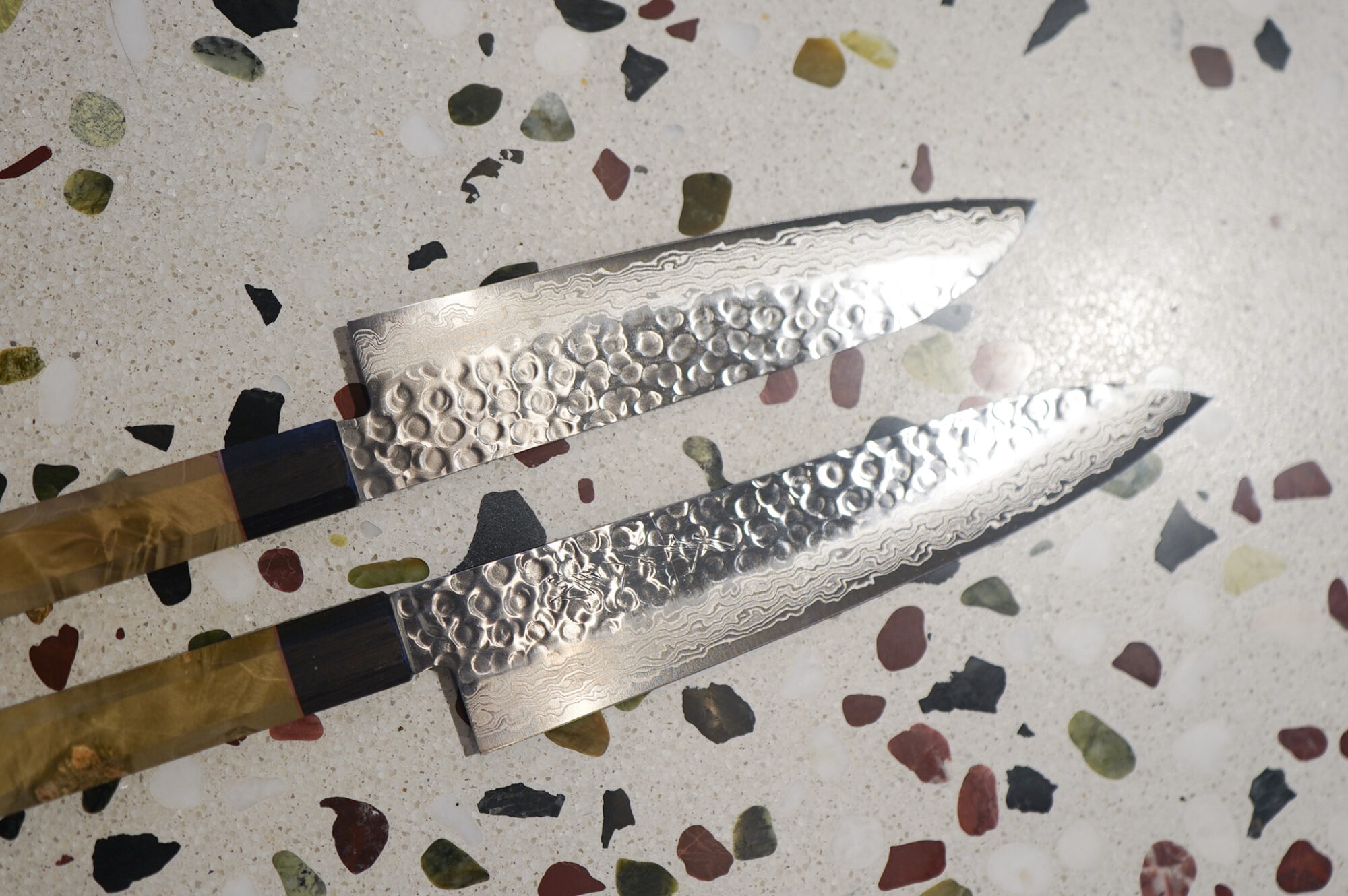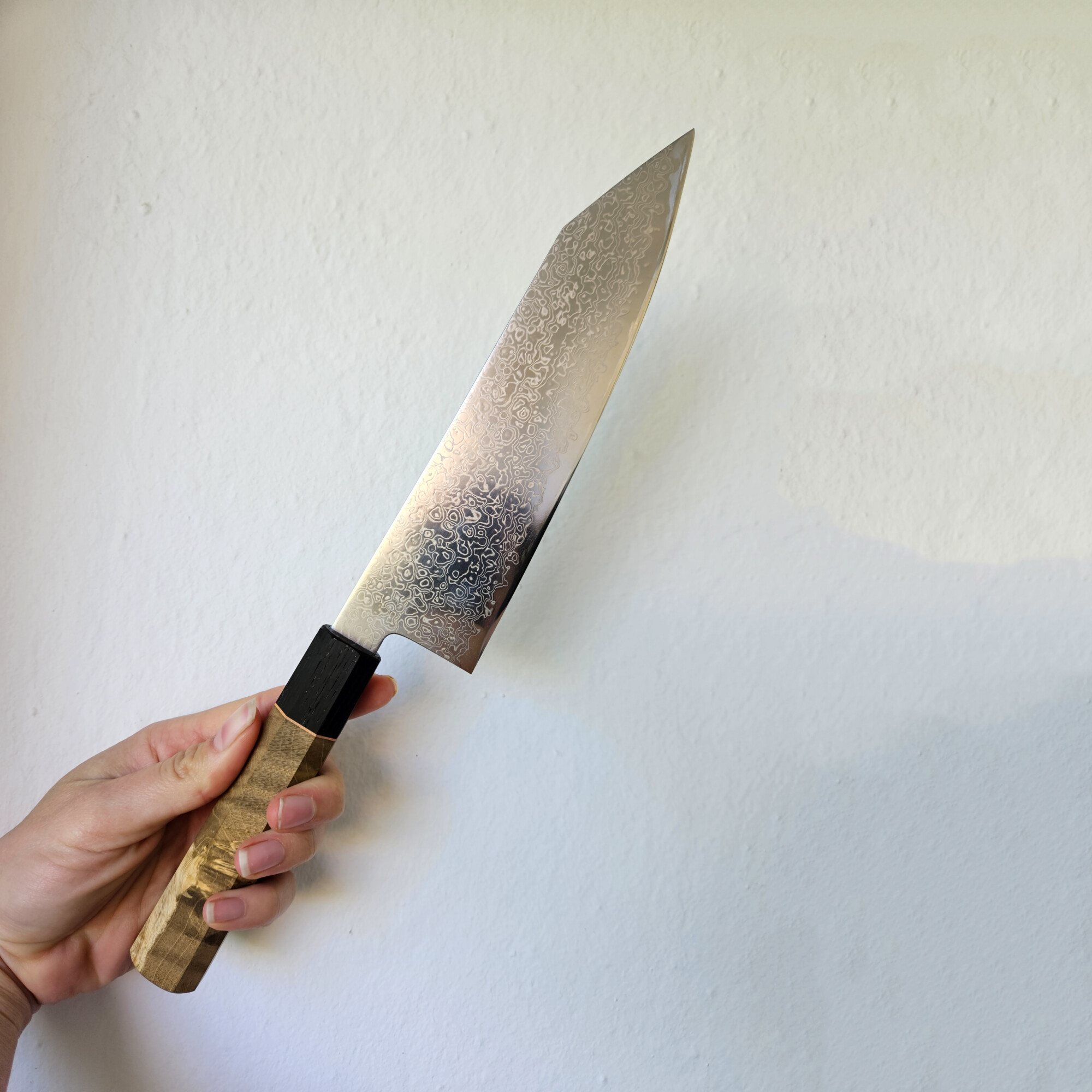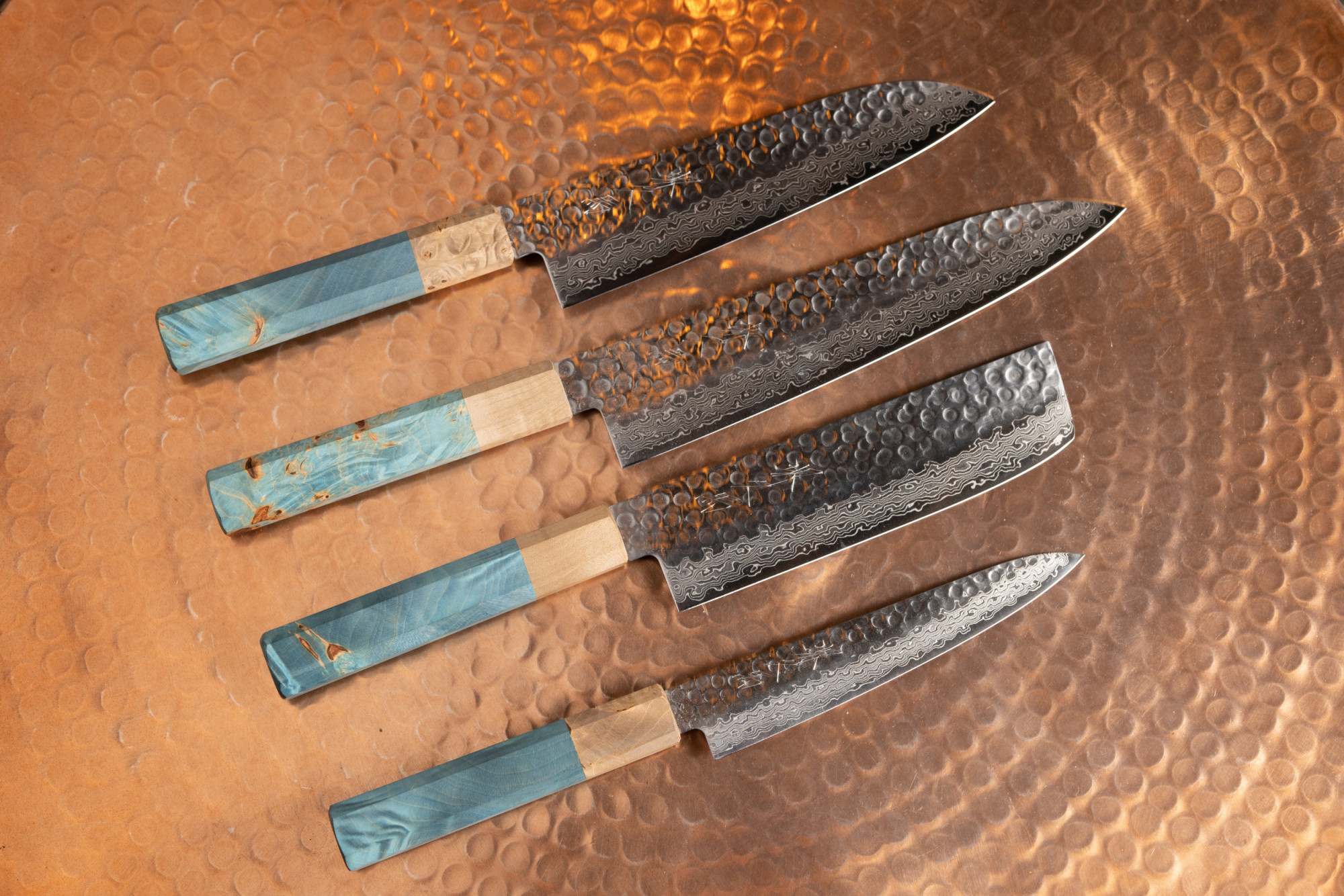The kitchen is a welcoming place for kids. With so much magic happening there—parents rushing around, prepping meals, pulling colorful items from the shelves and refrigerator, creating irresistible smells—cooking and baking can be a very enjoyable time for the family. Naturally, knives play a big part in kitchen activities. With everything going on, from divided attention to your kids’ excitement, it’s important to establish good knife habits and prioritize knife safety. To help you navigate this, we have prepared a comprehensive list of tips that will significantly reduce the risks of accidents and problems, including tips on when to progress from child-friendly knives to the standard ones you use:
- Keep knives out of reach: Always remember to keep your knives away from the edge of counters or appliances where little hands can reach them. Remind yourself and others in the kitchen of this important rule every day.
- Utilize safe storage solutions: Consider installing a wall-mounted magnetic knife hanger high enough that it remains inaccessible to your children. Another effective method is keeping your knives in a child-proof drawer with secured locks or using knife guards or blade covers for added protection.
- Avoid loose storage in drawers: Never leave your knives loose in a drawer. Aside from the risk of accidental cuts, the blades can also get damaged from rattling around. Opt for knife blocks or inserts, or use a knife roll or sheaths to provide proper storage and protection.
- Keep knives away from wet sinks: Wet, slippery sinks are where rust can easily form, potentially damaging the blade of the knife. Avoid leaving your knives in a wet sink, especially overnight. Instead, make it a habit to wash your knives immediately after use, ensuring they are thoroughly dried before storage.
- Teach proper handling and technique: When your children are ready to use knives, ensure they understand and practice proper handling techniques. Teach them to hold the handle firmly, with their fingers away from the blade. Encourage a smooth and controlled cutting motion, emphasizing the importance of keeping their focus on the task at hand.
- Start with child-friendly knives: Introduce your children to the kitchen by providing them with child-friendly knives or knives with rounded edges. These knives are specifically designed for young chefs and offer a safer learning experience.
- Establish a designated cutting area: Set up a specific area in the kitchen where your children can safely practice their cutting skills. Use a sturdy cutting board that won’t slip, and ensure the area is well-lit and free from distractions.
- Gradual progression: Allow your children to progress gradually in their knife skills. Start with softer foods, such as cooked potatoes, before moving on to more challenging ingredients like meat. Supervise them closely during the initial stages, providing guidance and assistance as needed.
- Encourage independence: As your children become more confident with their knife skills, gradually let them take on more responsibility. Encourage their desire to cut their own food, offering support and assistance without taking over. This helps foster independence and builds their self-esteem.
- Positive reinforcement: Praise and acknowledge your children’s efforts in the kitchen. Celebrate their achievements and highlight their improvements. This positive reinforcement will inspire them to continue developing their knife skills in a safe and responsible manner.
At what age should a child be able to use a knife?
Some determined toddlers will try to cut their own food from the age of about 18 months. More dependent children will still ask their parents to cut their food when they’re 5 or 6 years old, or older. The majority are somewhere between those extremes. All kids are different and so their curiosity towards using knives. A child will be able to cut soft foods like cooked potatoes before they can cut more difficult food such as meat. And some children who are able to cut, prefer parents to do it because it’s neater – particularly for things like toast. If a child wants to cut their own food, they should be encouraged and help should be offered but never pushed.

One of the first things kids should learn in the kitchen is how to play in the kitchen. By using plastic, child-friendly knives early to cut soft foods or desserts is appropriate you can ignite your kid’s curiosity towards exploring different textures and shapes, a movement so much praised by Montessori advocates. By 5 years a child should be learning to spread and cut with a knife. It is often not until they are around 7 years of age that a child can use a knife and fork together to cut up food and are truly independent with self-feeding.
What should parents avoid when teaching kids to use knives?
Remember, the key to teaching kids about knives is a balance between safety and independence. Start with child-friendly knives and progress to teaching your little ones on how to properly handle normal knives. While supervision is crucial, allow them to explore and develop their skills at their own pace. By establishing good knife habits and prioritizing safety, you can create a nurturing environment where your children can learn and grow their culinary abilities with confidence. Enjoy the special moments spent cooking together and watch as your little ones develop into skilled and responsible chefs!










